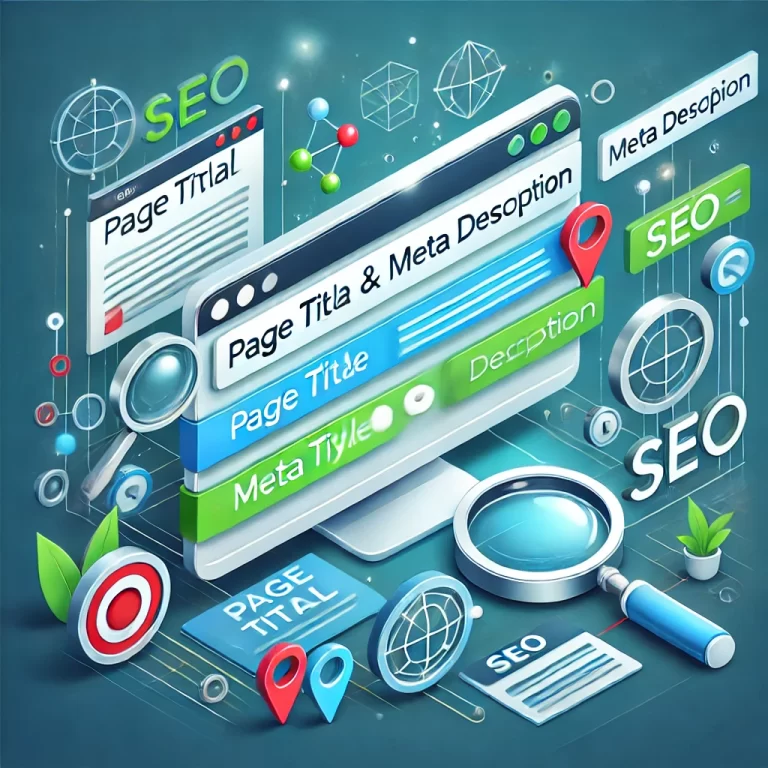Optimize Page Titles and Meta Descriptions: A Comprehensive Guide

Introduction
Ever wondered what makes a website stand out on search engine result pages (SERPs)? Often, the magic lies in something as simple as page titles and meta descriptions. These elements act like your site’s first impression—they determine whether someone clicks or scrolls past. Think of them as the headline and blurb of a bestselling book. When done right, they’re irresistible.
This article will dive into everything you need to know about crafting effective page titles and meta descriptions that grab attention and drive traffic. Ready to supercharge your SEO? Let’s get started!
Why Page Titles and Meta Descriptions Matter
Your page title and meta description are your digital calling cards. They appear in search engine results and influence whether users click your link or move on to another. A compelling title and description can improve click-through rates (CTR), enhance user engagement, and signal relevance to search engines.
What Makes a Good Page Title?
1. Relevance and Clarity
Your title should clearly indicate the content of your page. Avoid clickbait; users should know exactly what they’ll find.
2. Keyword Integration
Incorporate your primary keyword naturally. For example, instead of “All About Cooking,” use “Master Home Cooking with These Easy Tips.”
3. Length Matters
Keep titles under 60 characters to prevent truncation in SERPs.
Crafting the Perfect Meta Description
1. Be Descriptive
Your meta description should summarize your page’s content in a way that entices readers.
2. Use a Call-to-Action
Phrases like “Learn more,” “Discover how,” or “Click here to explore” encourage users to take action.
3. Stay Within Character Limits
Aim for 150-160 characters. Anything longer might be cut off.
The Role of Keywords in Optimization
Why Keywords Matter
Keywords help search engines understand your content’s focus. Including them in titles and descriptions improves visibility.
Placement Tips
Use primary keywords early in the title and naturally within the meta description. Don’t overstuff!
How to Align Titles with User Intent
User intent refers to what someone hopes to achieve with their search. Craft titles and descriptions that answer questions, solve problems, or provide valuable information.
Best Practices for Page Titles
- Be Unique: Avoid duplicate titles across pages.
- Add Numbers: Headlines like “10 Tips for…” often perform better.
- Incorporate Branding: Include your brand name where relevant.
Best Practices for Meta Descriptions
- Focus on Value: Highlight what sets your page apart.
- Use Active Voice: It makes descriptions more engaging.
- Include Secondary Keywords: These can capture additional traffic.
Tools to Help Optimize Your Titles and Descriptions
- Yoast SEO: Offers real-time analysis of your titles and descriptions.
- SEMrush: Provides insights into keyword performance.
- Google Search Console: Helps you monitor and improve CTR.
Common Mistakes to Avoid
- Keyword Stuffing: It looks spammy and reduces readability.
- Vague Titles or Descriptions: Users won’t click if they don’t understand your value.
- Neglecting Updates: Regularly refresh your meta tags for relevance.
Monitoring and Improving Click-Through Rates
Use analytics tools to measure CTR and adjust your titles and descriptions accordingly. Experiment with different formats to see what resonates best.
The Impact on Mobile Search
With most searches happening on mobile, make sure your meta tags are optimized for smaller screens. Shorter, punchier text works best.
How Social Media Uses Meta Descriptions
Social platforms often pull meta descriptions when links are shared. This makes writing engaging, shareable text even more critical.
The Future of SEO and Meta Tags
With advancements in AI, search engines are getting better at understanding context. Focus on crafting meaningful, user-friendly meta tags.
Real-World Examples
Example 1: E-commerce
Title: “Affordable Winter Jackets for Men – Free Shipping”
Meta Description: “Stay warm this winter! Shop our collection of affordable men’s winter jackets with free shipping and returns.”
Example 2: Blog
Title: “10 Easy Recipes for Beginners | Cooking Made Simple”
Meta Description: “New to cooking? Discover 10 easy recipes that anyone can make. Step-by-step instructions to get you started today!”
Conclusion
Your page title and meta description are the unsung heroes of SEO. They may seem small, but their impact on traffic, rankings, and user engagement is huge. By understanding best practices and staying updated on trends, you can create meta tags that not only rank well but also resonate with users. Remember, a great meta tag is like an irresistible book cover—it pulls people in and leaves them eager to explore more.


